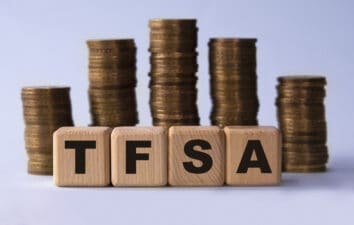Canadian telecom giant BCE’s (TSX:BCE) stock price has declined to a key low point in April, sending the dividend yield close to 9%. The $40.7 billion Canadian media and telecommunications company’s shares traded at prices under $45 a share on Wednesday to print new 52-week lows and a 39% drawdown on BCE stock.
BCE stock is selling at prices last seen during a COVID-19 crisis-related capital flight! What could be worse about the business’ future outlook than a ferocious pandemic that threatened to wipe out a significant portion of the human population? The COVID-19 flight to cash could have been rational given traders’ fear, sentiment, and bearish expectations at the time. But a sustained decline in BCE’s market value in 2024 raises questions.
Stock prices are forward-looking. The market seems worried about something as disastrous as a pandemic impacting BCE’s business operations, earnings margins, and cash flow over the next three years. Perhaps the 8.9% dividend could be on the line too, and income-oriented investors should revisit their dividend analysis spreadsheets.
BCE stock in three years
BCE isn’t going anywhere over the next three years – unless it gets acquired in a merger by a rival, but the odds are slim due to an anti-trust and pro-competition regulatory regime. The media and telecommunications company controls significant market share in a defensive industry that continues to generate positive cash flow – even during recessions. Bay Street analysts project a 1.5% compound annual growth rate in BCE’s total revenue over the next two consecutive years.
The company is one of Canada’s largest telecommunications services providers serving nearly 10.3 million mobile phone subscribers following a substantial 3.4% customer growth rate in 2023. Revenue should continue to grow with immigration, wireless and fiber network investments, and its strong brand’s customer attraction. Annual revenue should continue to expand, albeit slowly.
That said, BCE’s earnings are increasingly in trouble. Efforts to retrench employees and contain costs may only go thus far if interest rates remain elevated while the company’s $36 billion debt continues to balloon as it invests for growth. Current analyst estimates project a 0.3% sequential earnings per share decline in two years.
A negative regulatory ruling in 2023 that forces BCE to open up its fibre network to small competitors at wholesale prices will take away potential customers, significantly reduce the company’s pricing power, shrink its operating margins, and reduce returns on invested capital.
Resultantly, slow revenue growth and lower earnings margins may combine to justify low-to-negative capital gains on BCE stock over the next three years – unless the company harnesses artificial intelligence fast enough to reduce recurring employment costs, among other cost-cutting measures, which may include media asset sales to offload poor performing assets.
Is the dividend safe?
BCE may eventually cut its dividend to more sustainable levels at some point during the next three years if cost-cutting efforts fail to save the growing payout.
This writer is increasingly concerned about BCE stock’s dividend quality, even if the company strives to retain its dividend aristocrat status after 17 consecutive years of dividend growth.
Although a high earnings payout rate of 170% isn’t a concern for a company that charges almost $5 billion in non-cash depreciation and amortization expenses annually, a free cash flow payout rate beyond 100% would be a significant red flag.
Free cash flow is cash generated from normal business operations after capital expenditures. BCE is aggressively investing billions in building robust fibre and wireless networks at the expense of balance sheet liquidity.
The company paid out 76% of its free cash flow as dividends in 2019. The cash flow payout rate has crept to an expected 125% for 2024. The company can’t afford to pay its dividend and fund budgeted capital investments without borrowing this year. This is unsustainable.
Perhaps a dividend yield of 9% is the market’s message to management that investors see the payout as unsustainable. Dividend cuts are painful, but they are at times necessary to preserve a company’s scarce cash resources and maintain a healthy balance sheet.
If the dividend survives, management may significantly reduce capital expenditures to the bare minimum levels necessary to maintain network quality.







